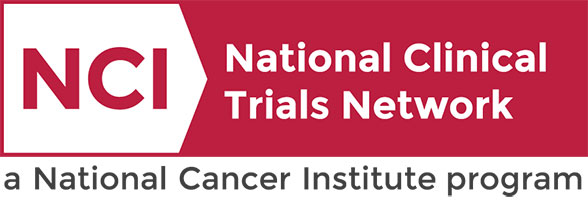Patient Search
 |
 |
|
KaCrole Higgins was diagnosed with breast cancer in 2020. “In May 2020, I found a lump in my breast. I cried. By June, it was diagnosed as breast cancer, triple positive, stage 1A. While getting this cancer diagnosis was devastating, it also became an opportunity. Suddenly, the cancer gave me clarity. It gave me clarity about what was important, what was good in my life, what was toxic in my life, and what I needed to do.” Click below to read more of KaCrole’s story |
If Landon Ryan had been diagnosed with bilateral retinoblastoma 10, 20 or 30 years ago, she might not be here today with nearly perfect vision.Thanks to recent improvements in the treatment for this rare form of cancer that almost exclusively affects children under the age of 5, the diagnosis had the power to change Landon’s life when she was 11 months old, but not to take it — or her eyesight. Click below to learn more about Landon and her story. https://momentum.vicc.org/2022/04/brighter-outlook/ |
Triptorelin for the Prevention of Ovarian Damage in Adolescents and Young Adults With Cancer
Ovarian
Ovarian
This phase III trial compares the effect of giving triptorelin vs no triptorelin in preventing ovarian damage in adolescents and young adults (AYAs) with cancer receiving chemotherapy with an alkylating agents. Alkylating agents are part of standard chemotherapy, but may cause damage to the ovaries. If the ovaries are not working well or completely shut down, then it will be difficult or impossible to get pregnant in the future. Triptorelin works by blocking certain hormones and causing the ovaries to slow down or pause normal activity. The triptorelin used in this study stays active in the body for 24 weeks or about 6 months after a dose is given. After triptorelin is cleared from the body, the ovaries resume normal activities. Adding triptorelin before the start of chemotherapy treatment may reduce the chances of damage to the ovaries.
Ovarian
III
Davis, Elizabeth
NCT06513962
COGALTE2131
Active Surveillance, Bleomycin, Etoposide, Carboplatin or Cisplatin in Treating Pediatric and Adult Patients With Germ Cell Tumors
Multiple Cancer Types
This phase III trial studies how well active surveillance help doctors to monitor subjects with low risk germ cell tumors for recurrence after their tumor is removed. When the germ cell tumor has spread outside of the organ in which it developed, it is considered metastatic. Chemotherapy drugs, such as bleomycin, carboplatin, etoposide, and cisplatin, work in different ways to stop the growth of tumor cells, either by killing the cells, by stopping them from dividing, or by stopping them from spreading. The trial studies whether carboplatin or cisplatin is the preferred chemotherapy to use in treating metastatic standard risk germ cell tumors.
Germ Cell (Pediatrics),
Gynecologic,
Ovarian
III
Borinstein, Scott
NCT03067181
COGAGCT1531
Testing Olaparib for One or Two Years, With or Without Bevacizumab, to Treat Ovarian Cancer
Multiple Cancer Types
This phase III trial compares the effect of olaparib for one year versus two years, with or without bevacizumab, for the treatment of BRCA 1/2 mutated or homologous recombination deficient stage III or IV ovarian cancer. Olaparib is a polyadenosine 5'-diphosphoribose polymerase (PARP) enzyme inhibitor and may stop the growth of tumor cells by blocking some of the enzymes needed for cell growth. Bevacizumab is in a class of medications called antiangiogenic agents. It works by stopping the formation of blood vessels that bring oxygen and nutrients to tumor. This may slow the growth and spread of tumor. Giving olaparib for one year with or without bevacizumab may be effective in treating patients with BRCA 1/2 mutated or homologous recombination deficient stage III or IV ovarian cancer, when compared to two years of olaparib.
Gynecologic,
Ovarian
III
Crispens, Marta
NCT06580314
NRGGYNGY036
Heated Intraperitoneal Chemotherapy Followed by Niraparib for Ovarian, Primary Peritoneal and Fallopian Tube Cancer
Ovarian
Ovarian
Patients will be registered prior to, during or at the completion of neoadjuvant chemotherapy (Paclitaxel 175 mg/m2 IV over 3 hours and Carboplatin AUC 6 IV on Day 1 every 21 days for 3-4 cycles). Registered patients who progress during neoadjuvant chemotherapy will not be eligible for iCRS and will be removed from the study.
Following completion of neoadjuvant chemotherapy, interval cytoreductive surgery (iCRS) will be performed in the usual fashion in both arms. Patients will be randomized at the time of iCRS (iCRS must achieve no gross residual disease or no disease \>1.0 cm in largest diameter) to receive HIPEC or no HIPEC. Patients randomized to HIPEC (Arm A) will receive a single dose of cisplatin (100mg/m2 IP over 90 minutes at 42 C) as HIPEC. After postoperative recovery patients will receive standard post-operative platinum-based combination chemotherapy. Patients randomized to surgery only (Arm B) will receive postoperative standard chemotherapy after recovery from surgery.
Both groups will receive an additional 2-3 cycles of platinum-based combination chemotherapy per institutional standard (Paclitaxel 175 mg/m2 IV over 3 hours and Carboplatin AUC 6 IV on Day 1 every 21 days for 2-3 cycles) for a maximum total of 6 cycles of chemotherapy (neoadjuvant plus post-operative cycles) followed by niraparib individualized dosing until progression or 36 months (if no evidence of disease).
Following completion of neoadjuvant chemotherapy, interval cytoreductive surgery (iCRS) will be performed in the usual fashion in both arms. Patients will be randomized at the time of iCRS (iCRS must achieve no gross residual disease or no disease \>1.0 cm in largest diameter) to receive HIPEC or no HIPEC. Patients randomized to HIPEC (Arm A) will receive a single dose of cisplatin (100mg/m2 IP over 90 minutes at 42 C) as HIPEC. After postoperative recovery patients will receive standard post-operative platinum-based combination chemotherapy. Patients randomized to surgery only (Arm B) will receive postoperative standard chemotherapy after recovery from surgery.
Both groups will receive an additional 2-3 cycles of platinum-based combination chemotherapy per institutional standard (Paclitaxel 175 mg/m2 IV over 3 hours and Carboplatin AUC 6 IV on Day 1 every 21 days for 2-3 cycles) for a maximum total of 6 cycles of chemotherapy (neoadjuvant plus post-operative cycles) followed by niraparib individualized dosing until progression or 36 months (if no evidence of disease).
Ovarian
III
Crispens, Marta
NCT05659381
VICC-DTGYN23355


